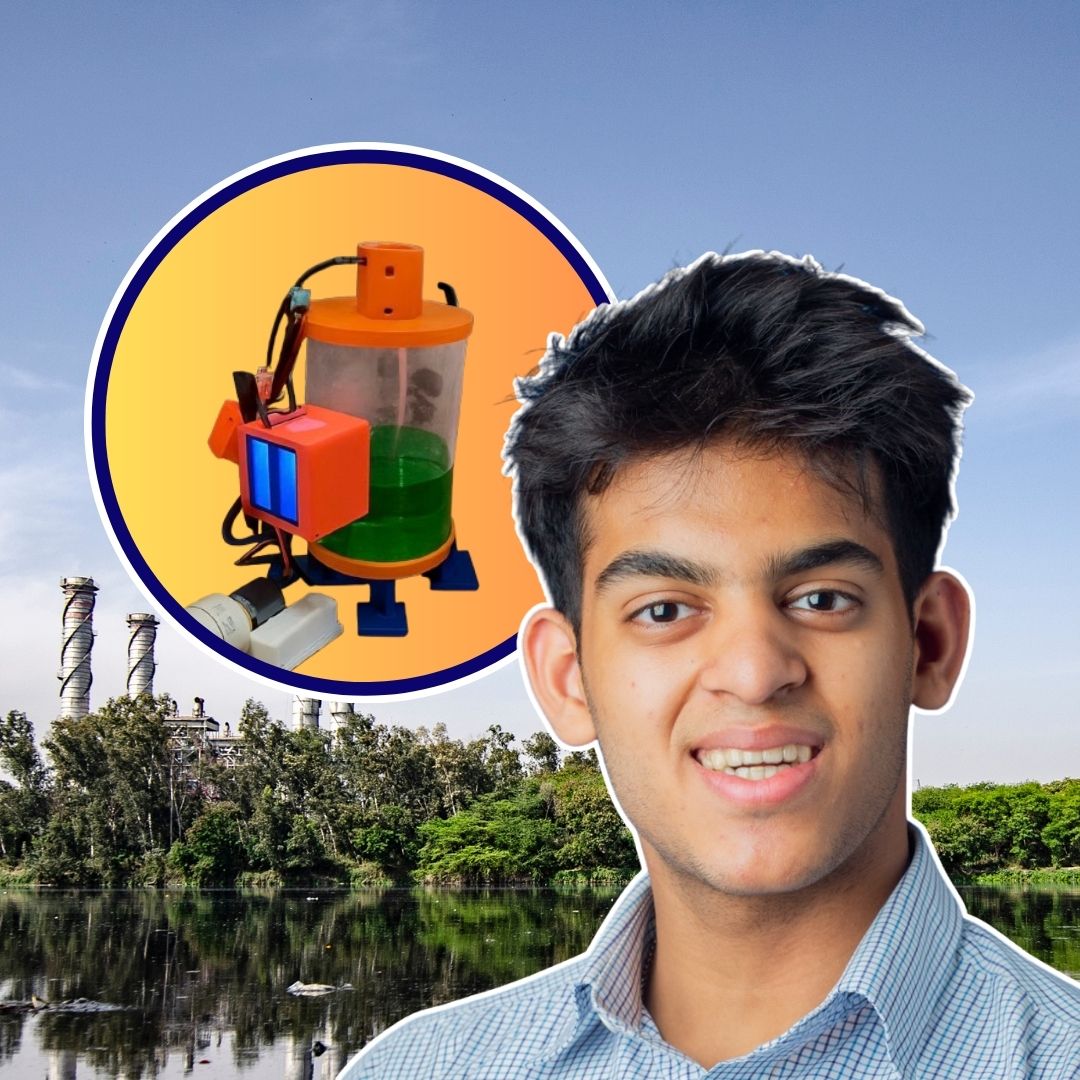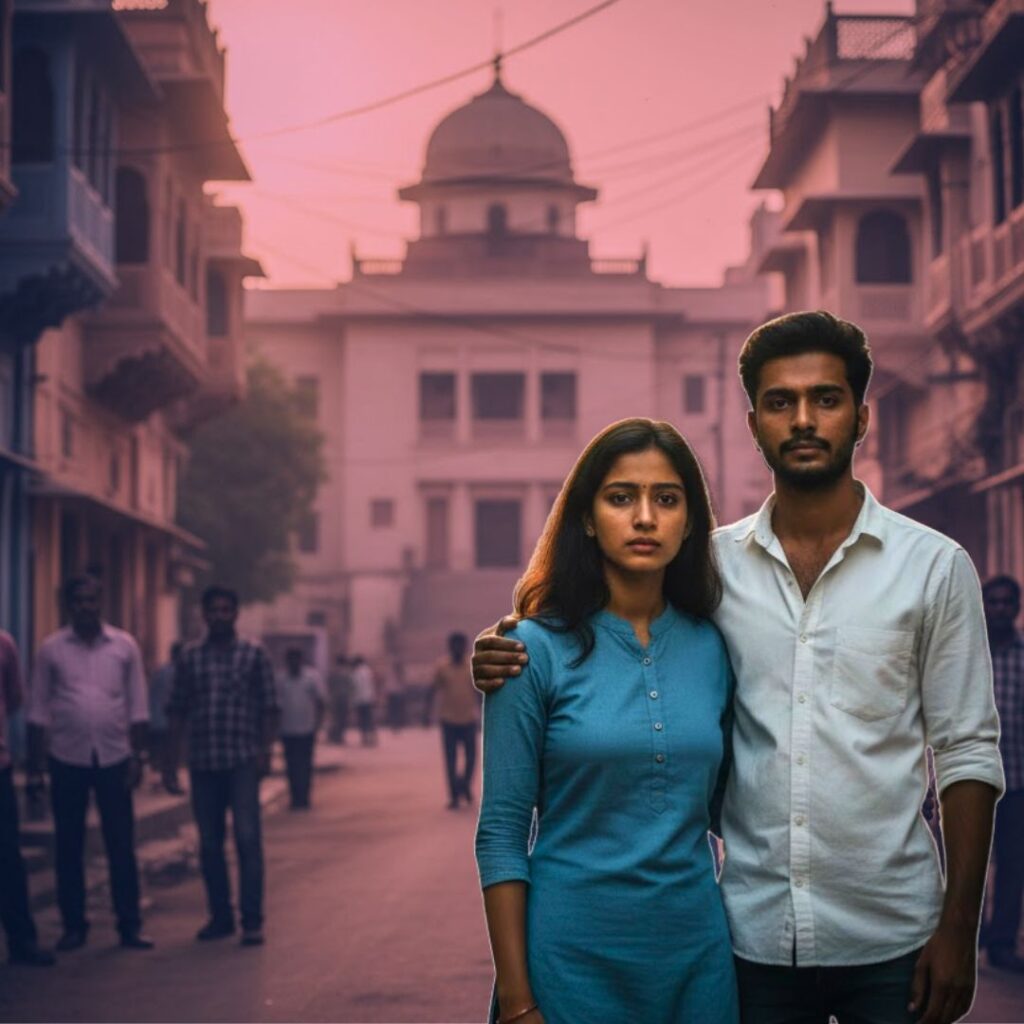A 17-year-old innovator from Mumbai, Hridank Garodia, has created Aerovive, a microalgae-based air purification system that captures carbon dioxide ten times faster than terrestrial plants. Developed with mentorship from IIT Bombay and Harvard experts, Aerovive performs the work of 40 houseplants in one unit.
The project recently earned recognition at both the IRIS National Science Fair and the ICSEAT International Conference, alongside a ₹10-lakh Letter of Intent for large-scale deployment across Mumbai’s corporate parks.
Garodia, also the founder of The Invisible Heroes Lab, now aims to bring this technology to schools, clinics, and offices across India while continuing his efforts to make environmental science education accessible to youth.
Breathing Innovation Into Everyday Spaces
Compact, sustainable, and data-driven, Aerovive offers a radical rethink of indoor air purification. The idea originated when Garodia noticed his peers and himself struggling to focus in classsroom, “I first noticed this issue when, in classrooms and my house, after leaving the windows shut for a prolonged period, I felt fatigued and had a headache.”
Later he discovered that classroom CO₂ levels had reached 1,500 ppm, well above the 945 ppm threshold known to affect cognitive performance. “After some research, I found Sick Building Syndrome, which exemplifies exactly
the problem that high CO2 and other contaminants play in indoor spaces. I knew that this was an issue that needed immediate attention. However, I realised that most machines are unable to filter CO2 and only particulate matter.”
Determined to find a biological solution, he turned to microalgae, which can absorb carbon dioxide at rates 10–20 times higher than terrestrial plants. “Existing machines could only filter particulate matter, but living systems like algae can actively remove CO₂,” Garodia explained.
With support from institutional mentors, each prototype evolved through rigorous testing, improving light balance, airflow design, and carbon absorption efficiency. The current version is an automated, modular unit capable of reliable operation across diverse indoor spaces.
Hridank’s journey began with a basic prototype made from simple tubes and boxes paired with a lighting setup. Over time, each version became more sophisticated, with improved light optimisation, better airflow and nutrient balance, and stronger structural design to ensure continuous, efficient operation. “By Version 3, I had a compact, automated system with reliable filtration data, robust and also refined enough to test in clinics, gyms, schools and offices.”
As Garodia puts it, “Scaling in a city like Mumbai means making Aerovive modular, energy-efficient, and easy to maintain. service. I’m currently working on obtaining manufacturing partnerships and IoT based integration for multiple units that can run across large campuses.”

From Curiosity to Classroom Change
Behind this breakthrough lies a larger educational mission. Through The Invisible Heroes Lab, Garodia and his team have reached over 1,000 students across Mumbai, conducting experiential science workshops focused on “invisible ecosystems”, microbial worlds of algae, bacteria, and fungi that underpin life.
The initiative aims to inspire the next generation of problem-solvers to look to nature for sustainable solutions. A way of reminding young learners that big problems often have small, biological answers. Plans are already underway to extend the programme to another 500 students next year, reinforcing a powerful link between scientific curiosity and civic action.
Balancing his academic commitments with research and environmental advocacy has not been easy for the young innovator. Between late-night paper reviews and early morning classes, the schedule can often be demanding. Yet, Hridank remains motivated by the harmony he finds across these pursuits, a shared thread of curiosity in the lab, responsibility in school, and the belief that even at 17, his work can make a tangible difference in people’s lives.

The Logical Indian’s Perspective
Hridank Garodia’s story reflects how empathy, awareness, and science can converge to address everyday challenges like air quality and cognitive well-being. His journey reminds us that impactful innovation often begins with personal observation and a will to change one’s surroundings for the better.
As India’s urban air quality continues to strain human health, solutions like Aerovive hint at a future where technology and nature collaborate rather than compete. The Logical Indian believes such stories embody a vision of hope, where youth-led science builds a cleaner, smarter, and kinder world.












